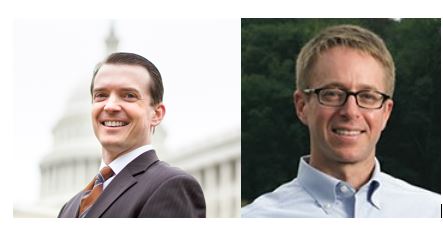At a time when the new administration is proposing substantial cuts to federal funding for working lands natural resources conservation – and the crucial conservation planning assistance that makes the on-farm results possible – it is more important than ever that we do not lose sight of this core fact: voluntary conservation works. Now is not the time to disinvest and retreat from the delivery approach that has been so successful for the past 80 years; now is the time to expand this world-class network of public and private partnerships to deliver effective conservation solutions.
USDA’s Natural Resources Conservation Service (NRCS), state agencies, and local soil and water conservation districts play irreplaceable roles in conservation delivery in the United States. Private-sector conservation efforts also work in tandem with these public entities, helping address critical soil, water, air, and wildlife needs across the country. Both public and private providers of conservation assistance have complementary skills and capabilities to offer farming and ranching operations. With a growing world population, we will need both sectors to be healthy, strong, and working together to meet the growing demands being placed on our natural resources.
The need for conservation across our country is enormous. Today more than 914 million acres – over 40 percent of our country in total – is in agricultural production. The landscape is incredibly diverse, further necessitating locally-led conservation efforts which are effective on farm and ranch operations in communities all across the nation. Sound conservation planning, developed at the local level in coordination with landowners and their trusted advisors, coupled with strong financial assistance, proves time and again to provide long-lasting solutions to tackle our nation’s environmental problems.
Today there are more options and technologies than ever to put conservation on the ground, allowing producers to customize the assistance they need to improve their land and their bottom line. New federal programs and initiatives, like the Regional Conservation Partnership Program, have encouraged more partners, both public and private, to invest in conservation activities. In addition, private companies and farmer-owned co-ops such as Land O’Lakes have increasingly become involved in planning and delivering conservation on working lands to meet their customers’ desire for food and fiber production, while also protecting and enhancing the quality of our natural resources. These new approaches are vital components to conservation planning and program delivery in the 21st century.
Within the agriculture and conservation community, we have a common cause to protect our land and resources. NRCS and conservation districts play a fundamental role in providing unbiased and scientifically-sound conservation planning and technical assistance that helps landowners address their priority resource concerns. The private sector increasingly plays a valuable role, too, by complementing the capabilities of the public agencies while expanding the suite of advanced tools and the number of expert “boots on the ground” to work with agricultural producers. Together, using the trusted voluntary approach to working lands conservation, both the public and private sectors can help farmers and ranchers make the best decisions for their lands and businesses. Together, these crucial public-private partnerships will enhance conservation delivery and further our ability to provide healthy soils, cleaner water, and abundant wildlife.
#30
Jeremy Peters is the chief executive officer for the National Association of Conservation Districts. Jason Weller, the former chief of NRCS, serves as senior director of sustainability for Land O’Lakes.


